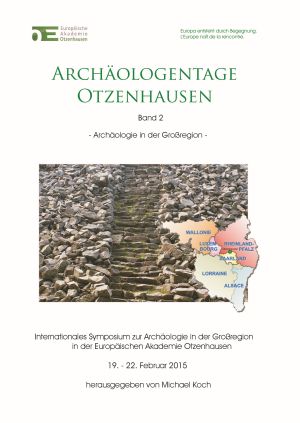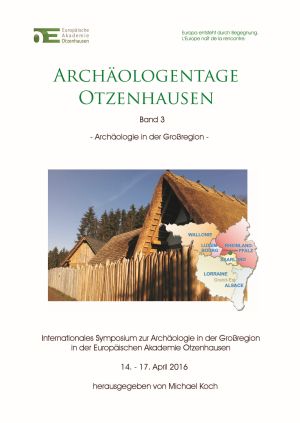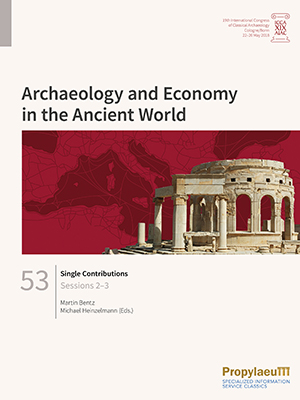Wiesenberg, Frank
Archäologie in der Großregion: Beiträge des internationalen Symposiums zur Archäologie in der Großregion in der Europäischen Akademie Otzenhausen vom 19. - 22. Februar 2015
The present conference proceedings document the lectures and presentations of the 2nd Otzenhausen Archaeology Days and thus make them accessible to those who were not able to attend the Archaeology Days. It is not possible to document the countless conversations and "border crossings" that took place on the sidelines and during the breaks, in the evenings and during the excursions. And yet it is precisely these that make the Otzenhausen Archaeology Days so appealing.
Archäologie in der Großregion: Beiträge des internationalen Symposiums zur Archäologie in der Großregion in der Europäischen Akademie Otzenhausen vom 7. - 9. März 2014
At the conference „Archäologentage Otzenhausen 2014“ the University of Fine Arts in Saarland (HBKsaar) presented two new concept studies in the fi eld of „Digital Cultural Heritage“:
Even before its offi cial launch (2015), this system developed in the fi eld of digital cultural heritage could be tested through a preliminary study. During the „Otzenhausen Archaeology Days”, 2014, an experimental set-up provided the opportunity to learn more about the system and to gather hands-on experience.
Archäologie in der Großregion: Beiträge des internationalen Symposiums zur Archäologie in der Großregion in der Europäischen Akademie Otzenhausen vom 14. - 17. April 2016
The third International Archaeology Days in Otzenhausen focused, among other things, on the Celtic ring wall, the so-called "Hun ring", as an archaeological project has been operated there since 1999, which is continuously embedded in the tourism concept of the community. The Celtic Park was officially opened in May 2016 and was therefore the focus of the meeting.
Sessions 2–3, Single Contributions
Economic aspects permeate all areas of public and private life in ancient societies, whether in urban development, religion, art, housing, or in death. Research on ancient economies has long played a significant role in ancient history. Increasingly in the last decades, awareness has grown in archaeology that the material culture of ancient societies offers excellent opportunities for studying the structure, performance, and dynamics of ancient economic systems and economic processes. Therefore, the main objective of this congress was to understand economy as a central element of classical societies and to analyse its interaction with ecological, political, social, religious, and cultural backgrounds. The theme of the congress was addressed to all disciplines that deal with Greco-Roman civilization and their neighbouring cultures from the Aegean Bronze Age to the end of Late Antiquity.
In this collective volume, single contributions of sessions 2 and 3 are dealing on the one hand with the investigation of natural environmental factors – climate and landscape – as impacts on the ancient economy, and on the other hand with the exploration of production system. Thematically, the spectrum ranges from the contextualisation of ancient handicrafts, to questions about the production of, for example, decorative metal objects, glass, portrait statues and bricks, to ancient architecture and the associated construction system. The temporal and topographical framework extends from Mycenaean and Archaic Greece, through Iron Age Southern Italy and Hellenistic-Roman Sicily as well as Macedonia, to Imperial Spain and Asia Minor.










